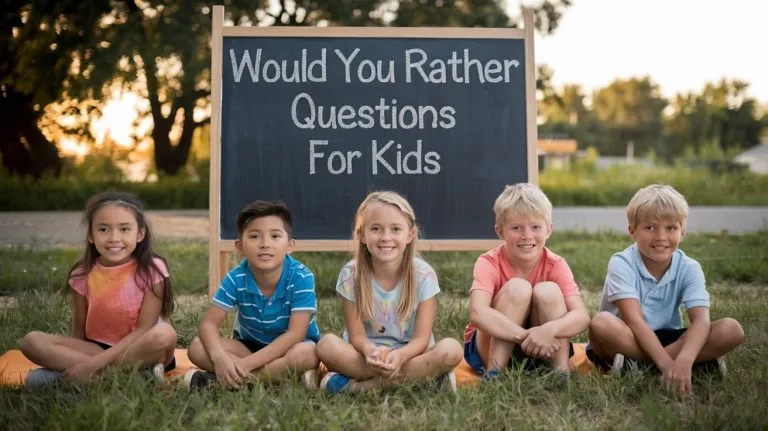Types of Parenting Styles and Their Impact on Kids
- What Is a Parenting Style?
- Types of Parenting
- Sub-Types of Parenting Styles
- Can Parents Change Their Parenting Style?
- FAQs
Once you become a parent and start taking care of your child, you realise that raising kids is a hard (and arduous) job. There’s no one parenting approach that works for all children, and you will have to rely on the trial-and-error method to understand the kind of parenting approach that would work well with your child.
No two families use the same kind of parenting style, but then there are some common parenting styles that most of us use. If you are looking for ways to raise your child better, deep dive into the meaning of parenting and parenting styles and understand the impact of each style on kids to see what would work for your little fellow!
What Is a Parenting Style?
A parenting style is a construct that lays the foundation for different strategies for parents to raise children in a guided manner. Different styles encompass different behaviours and attitudes of parents as well as the emotional environment in which children are raised.
Types of Parenting
Each parenting style uses a different approach towards raising kids. Diana Baumrind, a developmental psychologist at the University of California, Berkley, carefully studied different patterns of parenting styles. Her work in the 1960s in this regard is called Diana Baumrind’s parenting styles.
Diana noted that toddlers exhibited different kinds of behaviour. Each kind of behaviour is attributed to a specific style of parenting. After extensive research, surveys and interviews, she defined parenting styles psychology. Later in the 1980s, two more psychologists, Maccoby and Martin, contributed to refining the work of Diana Baumrind.
Diana Baumrind identified three parenting methods, namely: authoritative, authoritarian, and permissive. Martin and Maccoby expanded permissive parenting into two. Thus, we have four common parenting styles, including (1):
- Authoritarian
- Authoritative
- Permissive
- Neglectful
These parenting styles are differentiated based on two factors. The first factor is the support extended by parents to their children in day-to-day life. And the second is the amount of control exerted by parents on their children. Read on to understand each type of parenting style in detail.
1. Authoritarian Parenting Style
In the authoritarian parenting style, parenting is a mix of flexibility and discipline, where parents tend to govern children. Authoritative parents set rules for their children and communicate the same to them, and if their child doesn’t follow the said rules, they face the consequences (2). The child’s feelings are taken care of, but the parents remain the ultimate decision makers. If you can relate to these points, then chances are you are an authoritative parent.
Kids raised by authoritative parents often develop confidence, a sense of responsibility, and the ability to regulate their emotions. They also tend to be sociable, inquisitive, and focused on achieving their goals.
What It Is and What It Looks Like
The major attribute of this parenting style is the high level of parental control and the least responsiveness. These parents use the strictest approach towards parenting. Authoritative parents know only one way of communication, that is the parents’ way, and there is no room for negotiation. There is no limit to the expectations set by such parents. These parents set the rules, and if they are not followed, punishment follows. They neglect their child’s feelings completely.
Authoritarian parents focus on teaching their child to obey. They use punishment when the rules are not followed. They constantly make the child feel sorry for his/her mistakes. They demand unrealistic cooperation from the child.
Effects on Children
Just by reading about this parenting style, you can imagine how suffocated and neglected a child must feel. Children parented by an authoritarian style become proficient and obedient. But this proficiency comes at a cost. And the cost is too high. The negative effects of this parenting style on children are many. Let’s look at how authoritative parenting impacts children (3) (4) (5).
- Children remain sad or unhappy.
- They feel socially incompetent throughout life.
- They may have low self-esteem.
- Children may show behavioural issues like depression, anxiety, and suicidal tendencies as they grow up.
- Children have a habit of spoon-feeding. They cannot make any decision on their own. They are dependent.
- They always have a feeling of insecurity.
- They may become prone to mental illness.
- They can turn to drugs to calm their mind and nervous systems.
- Children may have little or no affection towards their parents.
2. Authoritative Parenting Style
In the authoritative parenting style, parents put effort into building a healthy relationship with their child. They take time to explain the rules to their child, and the child’s feelings are considered if he or she disobeys.
What It Is and What It Looks Like
Authoritative parents also set rules and create boundaries for their kids, but with an open discussion. The boundaries are set by giving reasoning and guidance to the child. These explanations create awareness in the child and teach morals, values, and goals.
The ultimate goal of the parents here is to discipline the child, but with negotiation and reasoning. Authoritative parents are outcome-oriented but are reasonable as well. These parents are supportive and affectionate. They encourage the child to be independent and are all ears to their children!
Parents who follow the authoritative style of parenting value appreciation a lot. They believe in giving rewards and praise.
Effects on Children
Authoritative parenting style has a positive impact on children. Parents who are raised by authoritative parents tend to be happy (6).
- Kids who are raised by an authoritative parenting approach grow up to be happy and satisfied humans.
- They value independence in life.
- They tend to be active throughout life.
- They tend to achieve academic excellence.
- They become socially competent and easily keep their point in public.
- They have high self-esteem.
- They have better mental health.
- They are emotionally attached to their parents.
3. Attachment Parenting Style
The attachment parenting style is the same as the authoritative style, but you give importance to physical touch and affection as well.
What It Is and What It Looks Like
Many experts see it as a subset of the authoritative parenting style. The emotional and parenting aspects are similar to the authoritative style. The thing that is new here is that the parent puts greater emphasis on physical touch and affection. These parents believe that babies are born to stay physically close and be nurtured.
This physical closeness mostly applies during the toddler years, when the child remains physically close, especially to the mother. This parenting style involves skin-to-skin contact, breastfeeding on demand, and minimising separation from the child.
Effect on Children
The effects of attachment parenting style on children are positive as well. Let’s look at how attachment parenting benefits a child.
- Children cope with life adversities and stress better.
- Children grow up to be happy and content.
- Children are socially competent and have great self-esteem.
- Children have better mental health.
4. Permissive Parenting Style
In the permissive parenting style, parents create rules but do not impose them. Parents who follow the permissive parenting style think that their child will learn eventually without their interference. In this form of parenting style, parents do not explain the consequences of a particular action to their child. If any of the above stands true, then you are a permissive parent.
What Is It and What It Looks Like
These parents act like friends to their kids (3). They rarely set rules and regulations for their kids. The parent with the methodology of ‘kids are kids.’ They will discipline the kids rarely because they think the kids aren’t mature enough to understand. These parents are more responsive than demanding. They cannot say NO to their children or disappoint them. This is why these parents are called indulgent parents.
Parents here do not even speak against the child, even when they are required to. This is because they think they might disappoint the child. They also do not discourage bad behaviour or wrong choices.
Kids who are raised through an attachment form of parenting style enjoy a lot of freedom and are not monitored closely. They are not taught responsibilities or chores, and the child’s day is also not structured.
Effect on Children
Let us now look at how this parenting way affects children.
- Children become free thinkers and are not afraid to speak their minds.
- They cannot be convinced easily to support something wrong in their beliefs.
- These children are more likely to struggle academically.
- These children cannot follow the rules.
- They do not have self-control.
- They have egoistic tendencies.
- They have major issues in social interactions and relationships.
5. Free-Range Parenting Style
The free-range parenting style is the same as the permissive parenting style, but with a few restrictions.
What It Is and What It Looks Like
The free-range parents are the ones who allow their kids to do things that they think the child is capable of doing. Parents who follow the free-range parenting style do not allow their child to do whatever the child wants, but they want their child to be independent. A free-range parent will let the child explore new things without helping or interrupting (only till the point the child is safe).
Effect on Children
The possible outcomes of this parenting style are explained below.
- The child becomes more capable of handling shock and challenges in life.
- It encourages creativity.
- The child has strong problem-solving skills.
- The only possible downside could be society talking about your negligence as a parent. In certain countries, there could be laws against such kinds of parenting, especially for toddlers.
6. Uninvolved Parenting Style
Parents who follow this form of parenting style do not spend time with their children. They also don’t show interest in knowing anything about their children, like how they are doing in school or if they are completing their homework on time. Parents don’t have much idea about their child’s progress.
What It Is and What It Looks Like
Uninvolved parents are those who are not at all involved in the child’s life. They have little or no idea what their child is doing. They set little to no rules, and the child remains deprived of nurturing, guidance, and parental attention.
Parents who follow an uninvolved parenting style generally stay out of the child’s way. They want their child to raise themselves. They do not invest much energy or time into fulfilling the child’s basic needs. Some parents can choose this kind of parenting consciously. But there could be a case where the parent is struggling with some mental health issue or is a victim of abuse. Such parents cannot take care of the child properly.
There can also be a possibility that the parent lacks parenting knowledge and is more engrossed in other household and office work.
Effects on Children
The possible outcomes of uninvolved child-rearing styles are (7):
- Children have low self-esteem.
- Children show behavioural issues.
- Children have lower cognitive and emotional empathy
- Children tend to be unhappy and discontent.
- Children perform badly in academics.
- Children become impulsive.
- Children are unable to regulate their emotions throughout life.
Sub-Types of Parenting Styles
There are plenty of other parenting style subtypes, including:
1. Helicopter Parenting
If you tend to be an overly protective parent who feels compelled to oversee many aspects of your child’s life, you might be classified as a helicopter parent. Helicopter parents frequently step in during their children’s lives, fixating on both their accomplishments and setbacks. The tendency of helicopter parents to assess risks is often fueled by fear and anxiety. Such parental intervention can impede a child’s development of essential life skills, self-confidence, and independence. According to research from the American Psychological Association, children who endure helicopter parenting are less capable of managing their emotions and behaviours (8).
2. Snowplow Parenting
Parents who are referred to as snowplow (or lawnmower or bulldozer) parents prioritise their child’s needs and desires, often disregarding everything else, regardless of how trivial those needs may be. They effectively “clear the path” of any obstacles in their child’s way. While these parents typically act with good intentions and wish to shield their children from hardship, their behaviour can undermine a child’s capacity for long-term fulfilment and may heighten their fear of failure.
3. Lighthouse Parenting
The lighthouse method, introduced by the paediatrician and author Kenneth Ginsburg, MD, is one of the most balanced parenting approaches. In his book, Raising Kids to Thrive: Balancing Love With Expectations and Protection With Trust, Dr. Ginsburg expresses: “We should embody the role of lighthouses for our children. Steady sources of light on the shore from which they can gauge their position.” The lighthouse parenting style focuses on striking the right balance between love, protection, communication, and nurturing for your child. Parents aim to steer and support their children, similar to the function of a lighthouse.
4. Tiger Parenting
5. Panda Parenting
In panda parenting, the caregiver encourages independence to help children learn to make their own choices. This approach holds that kids gain knowledge through exploration and learning from their errors, with caregivers providing support and nurturing in a more indirect manner. Panda parenting features subtle guidance, a strong sense of trust, a focus on developing problem-solving abilities, and promotes imaginative thinking.
6. Dolphin Parenting
A type of authoritative parenting, the dolphin parenting style seeks to achieve a balance in caregiving. Dolphin parents encourage their children to explore while also setting appropriate boundaries.
7. Jellyfish Parenting
Jellyfish parenting is one of the most different parenting techniques. Jellyfish parents concentrate primarily on their children’s desires, wants, and needs. With few rules and low expectations, this can result in an unstable home environment. Their relaxed approach often places jellyfish parents within the permissive parenting category.
8. Elephant Parenting
Similar to the animals they are named after, elephant parents are caring and protective of their children. They allow kids the freedom to express their emotions, which nurtures emotional intelligence from an early age. Elephant parents emphasise compassion, guidance, exploration, and adaptability in their everyday routines.
Can Parents Change Their Parenting Style?
Yes, parents can change their parenting style if they want to adopt a better version or a better parenting style according to the needs of the children. Changing parenting can be challenging in the beginning, but not impossible. First and foremost, parents need to evaluate their current parenting style, their preferred parenting style, and whether they are willing to change.
FAQs
1. Which is the most preferred and encouraged parenting style?
Authoritative parenting is often the most preferred and recommended parenting style. By combining effective communication with appropriate expectations for each age, this style can build emotionally well-adjusted adults capable of managing social interactions and establishing personal goals (1).
2. How do I avoid “messing up” my child?
Every parent worries about messing up, making mistakes, or causing unwanted trauma. However, the reality is that there’s no way to avoid any mistakes while parenting. Mistakes and learning are a part of parenting, which go hand in hand. Nonetheless, there are four main things to give your child while raising them: unconditional love, positive support, acceptance and validation. You should love, support, and accept children as they are. Validate their feelings are inculcate a sense of self-worth in them (10).
3. Is one parenting style suitable for very child?
No, a child’s family background, temperament, cultural background may influence the need for a particular parenting style. Parents can try different parenting styles and choose what suits their children best (11).
The circumstances and environment in each household are different, but they play a vital role in the development of a child. As parents, you should protect your child from a negative environment and try to teach them to do good and be a good person. You can try one or more or a combination of parenting styles to see what works for your child. Remember, whichever parenting style you choose, your aim should be to raise your child into a happy, content, and responsible individual. Happy parenting!
Also Read:
Parenting Classes
Controlling Parents
Wrong Parenting Styles
Bad Parenting and Its Effects on Children
Was This Article Helpful?
Parenting is a huge responsibility, for you as a caregiver, but also for us as a parenting content platform. We understand that and take our responsibility of creating credible content seriously. FirstCry Parenting articles are written and published only after extensive research using factually sound references to deliver quality content that is accurate, validated by experts, and completely reliable. To understand how we go about creating content that is credible, read our editorial policy here.
1. Mayo Clinic Press – The 4 types of parenting styles: What style is right for you?
2. American SPCC – THE 4 TYPES OF PARENTING STYLES
3. NIH – Types of Parenting Styles and Effects on Children
5. PubMed – Authoritarian parenting and youth depression: Results from a national study
6. PubMed Central – Parenting Styles: A Closer Look at a Well-Known Concept
7. MDPI – Consequences of Parenting on Adolescent Outcomes
10. Children’s Hospital Colorado – The Top 4 Parenting Styles: Which to Use and Why it Matters
11. Wellspring Center for Prevention – Which Parenting Style Is Best? Pros and Cons of the 4 Types























